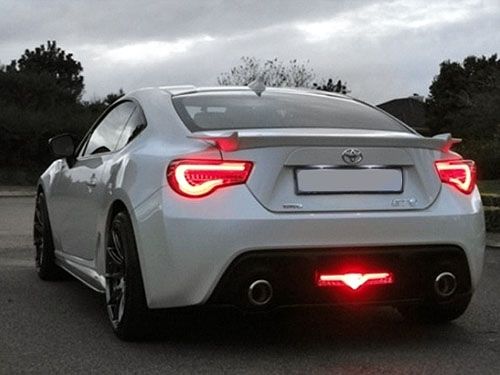Why are taillights red?

The original lights on cars in the early 1800s were just clear white or yellow (depending on what was burning) lanterns to improve the driver’s ability to see the road at night. Have you ever wondered how we came to install tail lights on the back of cars? For that matter, why was the color red chosen over maybe blue or purple? To answer these questions, you have to look back at the most widely used mode of transportation prior to privately owned motor vehicles.
Cars took lighting cues from trains
Trains set the standards for communicating to other moving trains through lights signals. Clear organization for relaying information between train cars, switching stations, railroad workers, and others near the tracks became a vital requirement to pursue commercial success as well providing safety precautions.
The color red signifies dangers
The “red means Stop” concept is historically associated with danger. In nature, red can be a signifier for poisonous plants and insects. Red also signifies that which we would like most to avoid - large pools of blood on the road. When color-coding signals, the colors chosen needed to be noticeable and easily distinguishable.
The incident that solidified “Red means STOP, Green means Go”
In 1914, a terrible accident led to a colored distinction for train lights. Originally, the signal indicating traffic was free to go was the same white light used to illuminate the forward path. A red lens fell out of a train lantern resulting in another train plowing into the other rather than stopping. The immense causalities required a nationwide system for communication. A green light had originally signified traffic should “proceed with caution.” The need to differentiate lights assisting the driver from lights communicating with other drivers forced developers to choose a specific color to indicate a clear pathway. Yellow appears to have been chosen to replace green to indicate “caution” as it is most distinguishable from green and red.
Why were red tail lights chosen for the back of a vehicle?
Again, the steam engines of yesteryear began the trend of red lights on the very back car. Dual rear lights finally entered the scene for cars in the late 1930s. For lack of written, historical documentation as to why, one may guess red lights on the back of a vehicle signals “Stop” to any motor vehicle operator behind it. This should alert any attentive driver to the presence of a another driver in front of him or her. One might also venture that colors already manufactured for lantern lenses were simply re-designated with the most logical simplicity to reduce the costs of developing yet more colors.
“Necessity is the mother of invention”
As more vehicles were developed and manufactured, the need to set a lighting standard for communication became the life-saving language between motorists. The increasing numbers of cars sharing the road moved the industry from solitary lamps to electric lighting with the options for white and red lights. The costly trial-and-error episodes of train transportation combined with the natural inclination to viewing red as a signal for alarm led to the installation of tail lights to tell other drivers to stop before they run into you!



 Facebook
Facebook
 Twitter
Twitter
 Instagram
Instagram
 Youtube
Youtube





